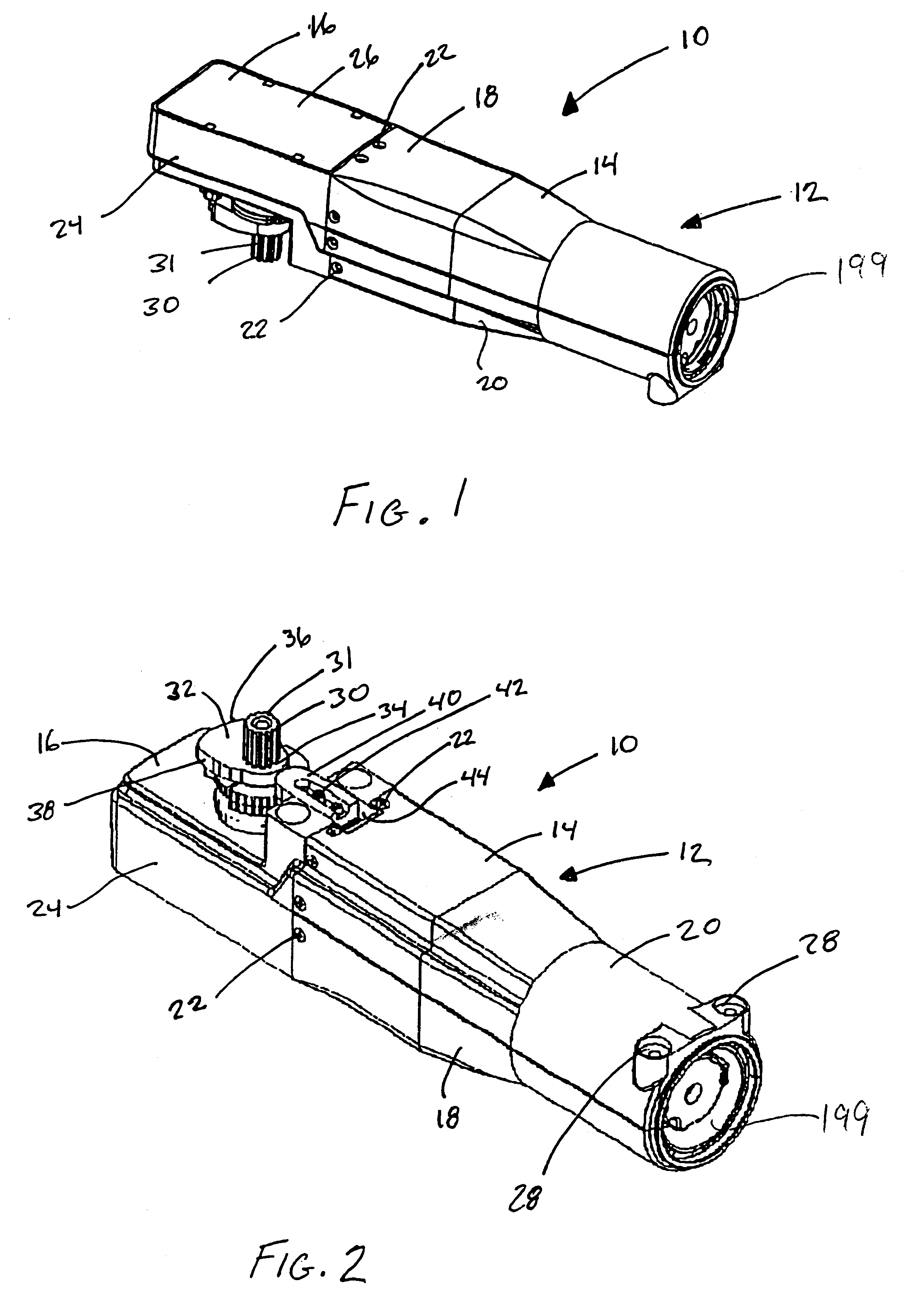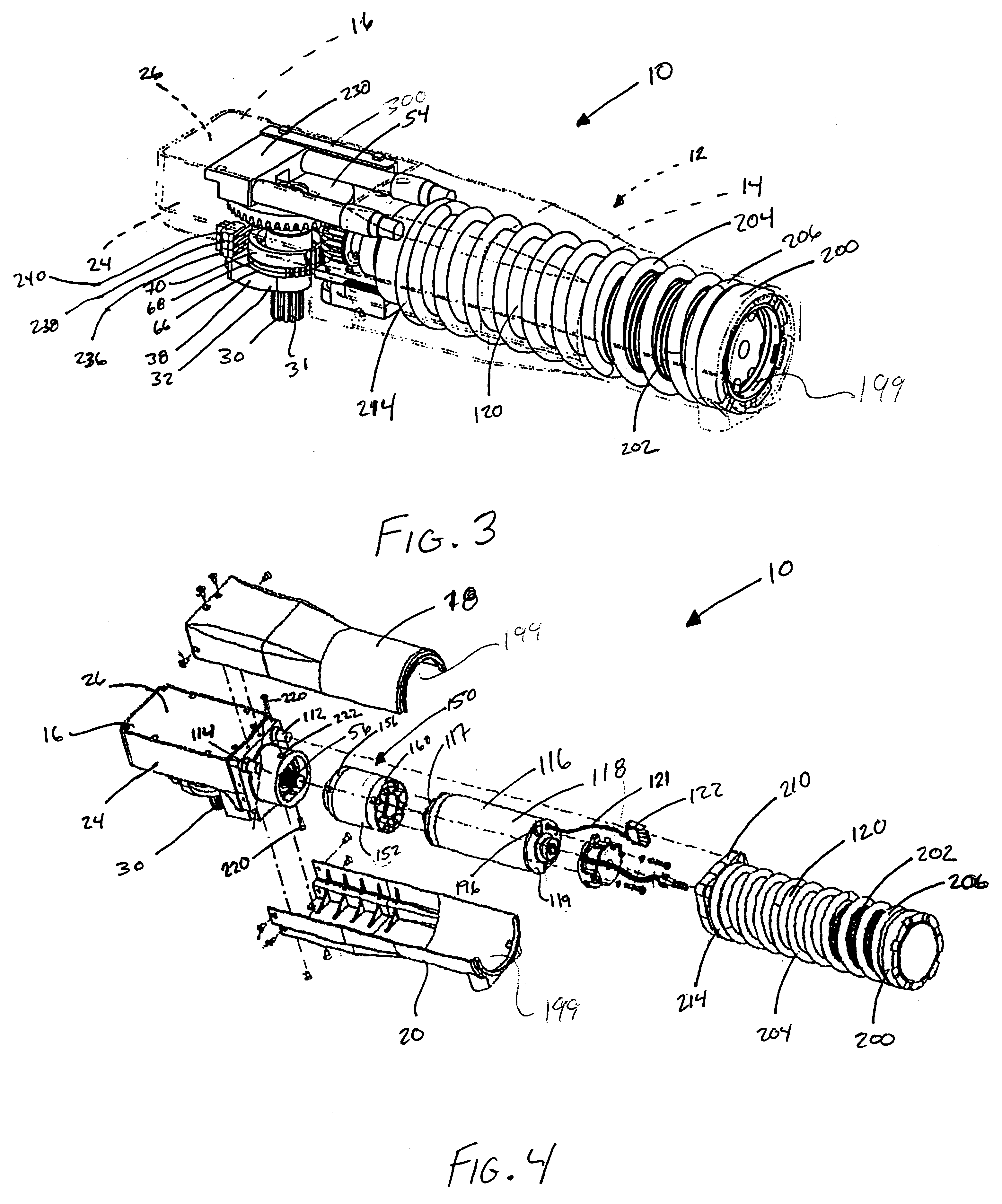Automatic door assembly and door operator therefor
a technology of automatic door assembly and operator, which is applied in the direction of wing openers, door/window fittings, constructions, etc., can solve the problems of inability to function in a "non-handed" manner, inability to change directions, and normal use of motors to return the door
- Summary
- Abstract
- Description
- Claims
- Application Information
AI Technical Summary
Benefits of technology
Problems solved by technology
Method used
Image
Examples
Embodiment Construction
FIG. 1 shows a perspective view of a swing door operator, generally indicated at 10, constructed in accordance with the principles of the present invention, the perspective being taken from above the operator. FIG. 2 shows a perspective view taken from below the operator 10. The operator 10 has a stamped, metal outer casing, or housing generally indicated at 12, comprising a motor / reduction transmission housing portion, generally indicated at 14, and an output drive assembly housing portion, generally indicated at 16. The motor / reduction transmission housing portion 14 has upper and lower housing halves 18, 20, respectively, that are each secured together to a rearward end portion of the output drive assembly housing portion 16 by a plurality of threaded fasteners 22, such as conventional bolts or screws. The construction of the upper and lower housing halves 18, 20 and the manner in which they are secured to the output drive assembly housing portion 16 can be best appreciated from ...
PUM
 Login to View More
Login to View More Abstract
Description
Claims
Application Information
 Login to View More
Login to View More - R&D
- Intellectual Property
- Life Sciences
- Materials
- Tech Scout
- Unparalleled Data Quality
- Higher Quality Content
- 60% Fewer Hallucinations
Browse by: Latest US Patents, China's latest patents, Technical Efficacy Thesaurus, Application Domain, Technology Topic, Popular Technical Reports.
© 2025 PatSnap. All rights reserved.Legal|Privacy policy|Modern Slavery Act Transparency Statement|Sitemap|About US| Contact US: help@patsnap.com



